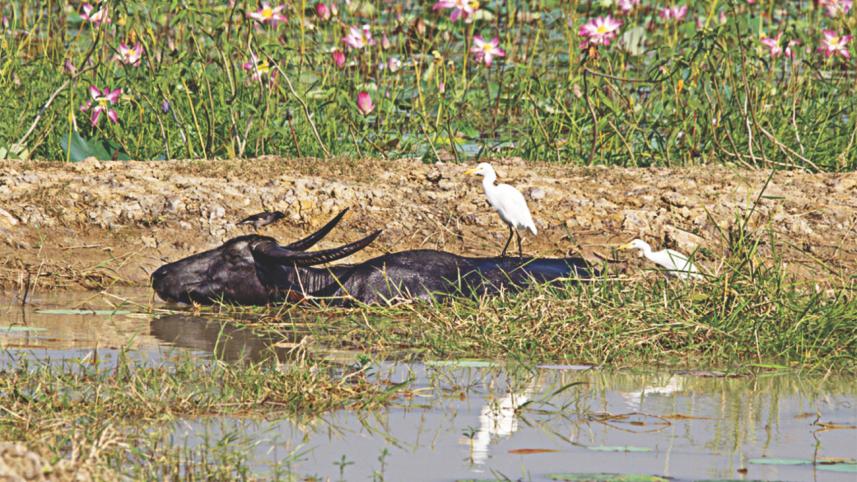On Domestication

For those who have not seen a water buffalo (mohish) up-close, it can be an unsettling experience. My first time was about ten years ago while bicycling through dried up haors. The massive, hairy animals with long, curved horns were blocking my way while happily grazing away. My initial fear, however, receded quickly as they ignored me and I realized they were gentle and docile creatures.
The water buffalo loves water. Its favourite exercise is to roll in the mud and laze in the sun. It has helped farmers with agriculture for centuries. Its rich, aromatic milk is used for making sweets and cheese.
Indeed, what could have been a ferocious animal is rendered harmless – and very useful - because it is domesticated.
On the other hand, I feel less comfortable around elephants. They are not domesticated, but tamed. Most elephants we see in domestic use are obtained from wild herds and trained. While Indian elephants can be tamed, African elephants cannot.
What is the difference between domestication and taming? Domestication requires many generations of breeding emphasizing certain characteristics of the animal. Domestic animals learn to live with humans, do their work, and, most importantly, breed in captivity. On the other hand, taming a wild animal is, essentially, training it for one generation only.
Domesticated animals have played a pivotal role in the course of civilization. Agriculture as we know it would be impossible without the domestication of the cow and its cousins. But historically the most important domestic animal is undoubtedly the horse. That is because the horse has enabled large groups of humans to move and migrate to different places (usually after conquering them.)
When we look at the history of civilization, we see that the ability of nations to domesticate large mammals has had a strong influence over their success. Thus, for example, the Aryans conquered using horses (using them for chariots, though – horseback soldiers had to wait for the invention of the saddle and the stirrup much later.)
So, why did some nations domesticate animals more successfully? For example, no large mammals were ever domesticated in Africa and South America. Though Africa has no native horse, it has the zebra which is close. But the zebra was never domesticated. There are many other animals that humans attempted to domesticate without success.
The scientist Jared Diamond pondered this question and came up with a list of six characteristics that an animal needs in order for successful domestication. It must eat without too much fuss. It must reach maturity – that is, productive and reproductive years - quickly. It must breed in captivity. It must be docile, not confrontational, by nature. It must not flee or panic when startled. And it must be a social animal conforming to a hierarchy, so that it recognizes the human as a leader.
Over the millennia of human civilization, very few animals have fit the bill. For example, the elephant's slow growth rate, the zebra's flighty nature, and the American bison's nasty attitude have precluded us from domesticating them.
So the next time you see a cow, a goat, a horse, or a water buffalo, think how lucky we are to have them as our beasts of burden.
www.facebook.com/tangents.ikabir



 For all latest news, follow The Daily Star's Google News channel.
For all latest news, follow The Daily Star's Google News channel.
Comments